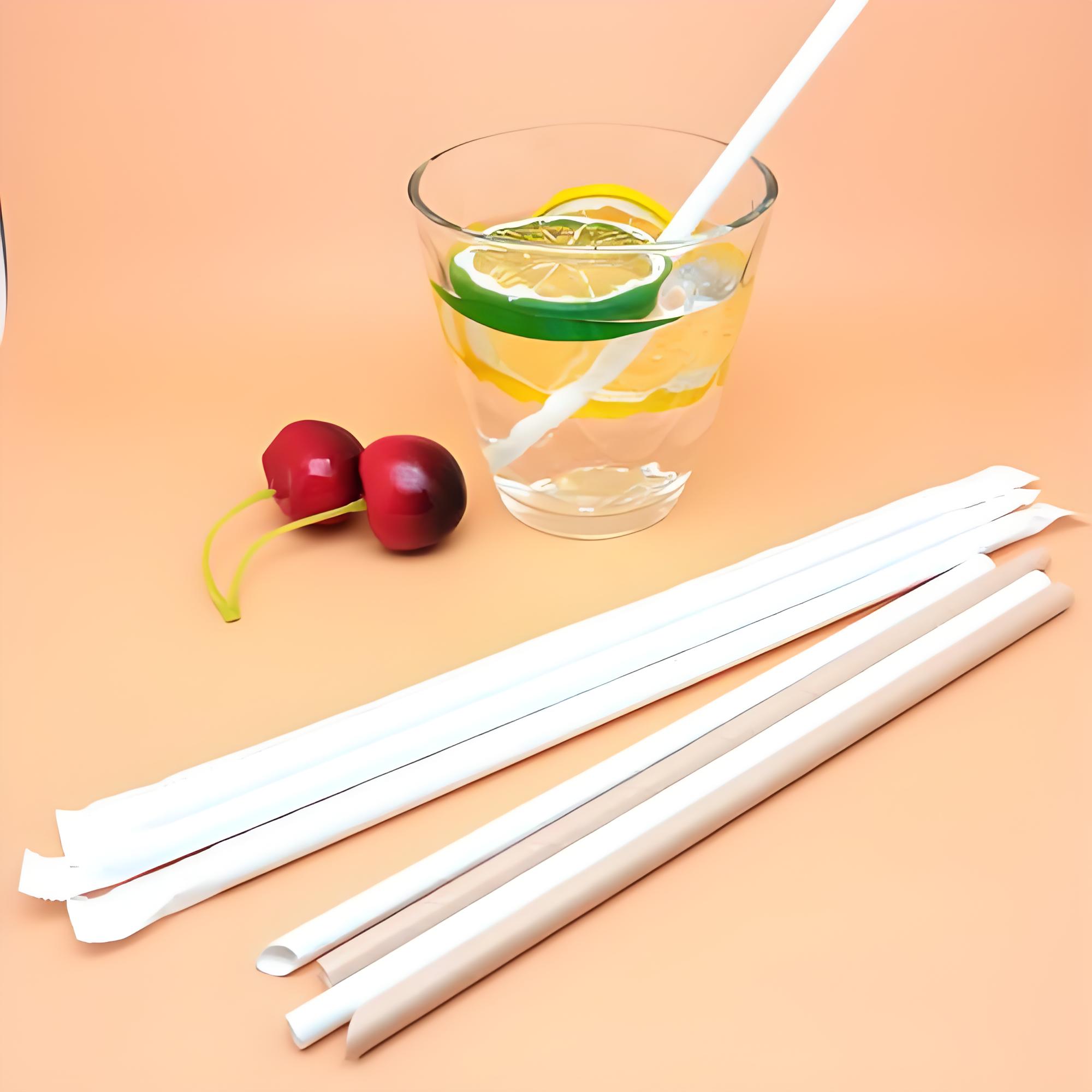- Home
-
Disposable Straw Packaging Innovations
Views: 0 Author: Site Editor Publish Time: 2025-01-30 Origin: Site
Introduction
The global discourse on environmental sustainability has increasingly highlighted the role of everyday items in contributing to pollution. Among these, the Disposable Straw has become a focal point due to its prevalence and impact on marine ecosystems. This article delves into the latest innovations in disposable straw packaging, exploring how technological advancements and innovative designs are mitigating environmental concerns while meeting consumer needs.
The Environmental Impact of Traditional Disposable Straws
Traditional disposable straws, predominantly made from polypropylene, contribute significantly to plastic pollution. According to a study by the Ocean Conservancy, an estimated 8 million metric tons of plastic enter the oceans annually, with straws being among the top ten items collected during coastal cleanups. The durability of plastic straws, while beneficial for consumer use, poses a threat to wildlife and degrades into microplastics that infiltrate the food chain.
Innovative Materials for Sustainable Straws
Biodegradable Alternatives
In response to environmental concerns, manufacturers are developing straws from biodegradable materials such as paper, polylactic acid (PLA), and even edible substances. Paper straws have gained popularity due to their compostability. Companies like Haolyland offer Disposable Straw options made from high-quality, food-grade paper that decompose naturally without harming the environment.
Polylactic Acid (PLA) Straws
PLA straws are crafted from fermented plant starch (usually from corn) and are biodegradable under industrial composting conditions. These straws offer a similar user experience to plastic straws but with a reduced environmental footprint. Studies have shown that PLA materials can reduce greenhouse gas emissions by up to 75% compared to traditional plastics.
Edible and Reusable Straw Innovations
Edible Straws
Edible straws present a novel approach by eliminating waste entirely. Made from ingredients like rice, wheat, or sugar, these straws can be consumed after use. For instance, rice-based straws maintain their structural integrity in liquids for up to 30 minutes, providing a practical alternative to plastic.
Silicone and Metal Reusable Straws
While not disposable, reusable straws made from silicone or metal are part of the broader conversation about reducing single-use plastics. These straws are durable, easy to clean, and can be used indefinitely, significantly cutting down on waste generated from disposable options.
Packaging Innovations in Disposable Straws
Eco-Friendly Packaging Materials
Innovations extend beyond the straws themselves to the packaging they come in. Manufacturers are adopting sustainable packaging made from recycled paper or biodegradable plastics. This holistic approach ensures that the entire product lifecycle is environmentally friendly.
Minimalist and Functional Design
Minimalist packaging reduces material usage and waste. By designing packaging that is just sufficient to protect the straws during transit, companies minimize their environmental impact. Functional designs that double as dispensers or holders add value while promoting sustainability.
Technological Advancements in Manufacturing
Advancements in manufacturing technologies are enabling the production of high-quality, sustainable disposable straws at scale. Techniques such as 3D printing and advanced molding allow for precision and efficiency, reducing material waste. Automation and AI integration in manufacturing processes enhance productivity and ensure consistent product quality.
Regulatory Impacts on Straw Innovation
Government regulations banning single-use plastics have accelerated innovation in disposable straws. Countries like the UK and cities like Seattle have implemented bans, prompting businesses to seek alternative solutions. These regulations drive research and development in sustainable materials and packaging methodologies.
Consumer Perception and Market Trends
Consumer awareness regarding environmental issues influences market demand. A Nielsen report indicates that 73% of global consumers are willing to change consumption habits to reduce environmental impact. This shift compels companies to innovate in product design and packaging to meet consumer expectations for sustainability.
Challenges in Implementing Sustainable Straws
Cost Implications
One of the significant hurdles is the higher production cost of biodegradable materials compared to traditional plastics. Investment in new manufacturing equipment and processes also adds to the expenses. However, economies of scale and technological improvements are gradually reducing these costs.
Performance and User Experience
Ensuring that sustainable straws match or exceed the performance of plastic straws is crucial. Issues such as reduced durability or altered taste can affect consumer acceptance. Continuous R&D efforts aim to enhance the quality and functionality of biodegradable straws.
Case Studies of Innovative Companies
Haolyland's Sustainable Solutions
Haolyland exemplifies innovation with its range of sustainable Disposable Straw products. By utilizing materials like PLA and biodegradable paper, the company offers eco-friendly alternatives without compromising on quality. Their commitment to sustainability is reflected in their comprehensive product lines and packaging solutions.
The Success of Edible Straws Inc.
Edible Straws Inc. has gained market traction by offering flavored, edible straws. Their innovative approach provides a unique user experience while eliminating waste. The company's products appeal to both environmental consciousness and novelty, driving consumer engagement.
Future Directions in Straw Packaging
The future of disposable straw packaging lies in integrating smart technologies and circular economy principles. Concepts like embedding seeds in packaging for planting after use, or incorporating QR codes for recycling information, are on the horizon. Embracing a circular economy ensures that materials are reused and recycled, minimizing environmental impact.
Conclusion
Innovations in disposable straw packaging reflect a broader shift towards sustainability in consumer products. By embracing new materials, designs, and technologies, manufacturers are reducing environmental footprints while meeting market demands. The journey towards eco-friendly Disposable Straw solutions is a collaborative effort involving industry, regulators, and consumers. Continued innovation and commitment are essential for creating a sustainable future.
Random Products
Recent Articles
Got questions? Send email!
Address: No 328, Building 1, No 59 tianyuan west road, Jiangning District, NanjingTel: +86-17366262165WhatsApp: +86-17366262165Copryright © 2024 Nanjing Haolyland Packaging Material Technology Co.,Ltd. All Rights Reserved I Sitemap I Privacy Policy































